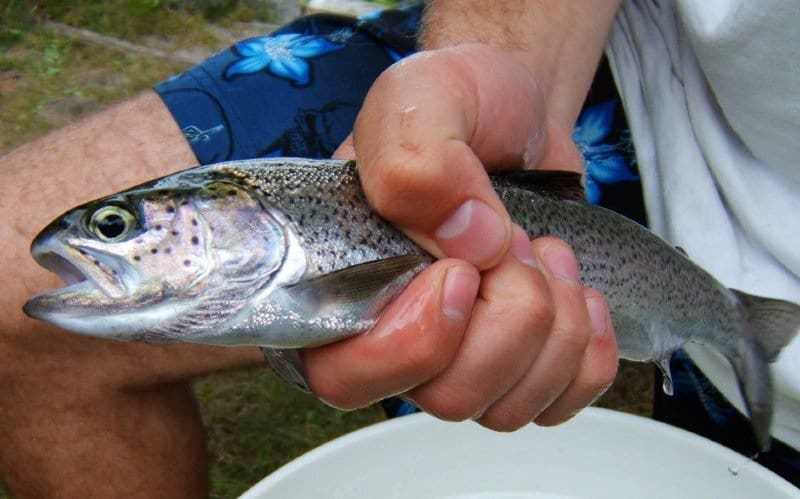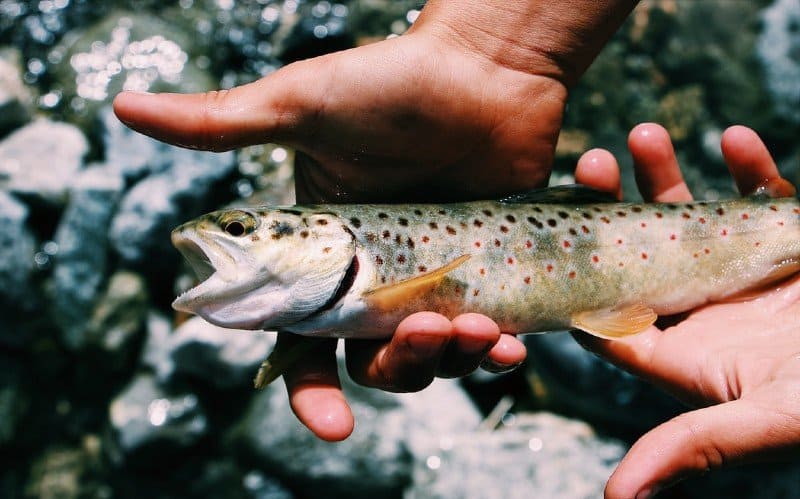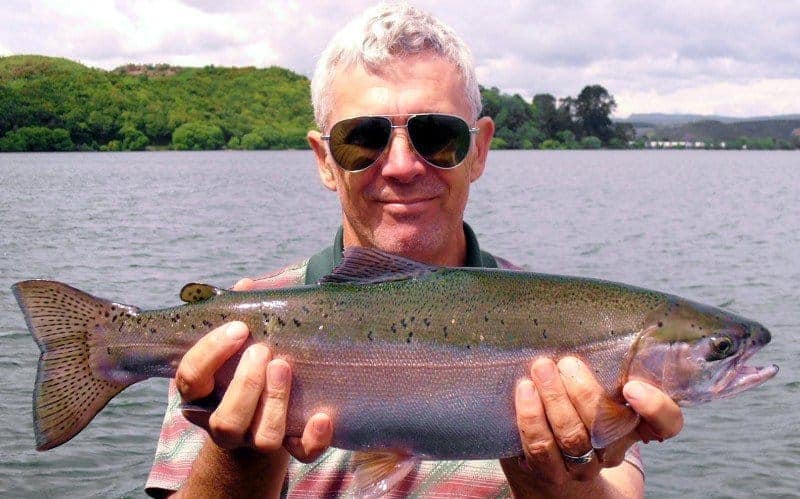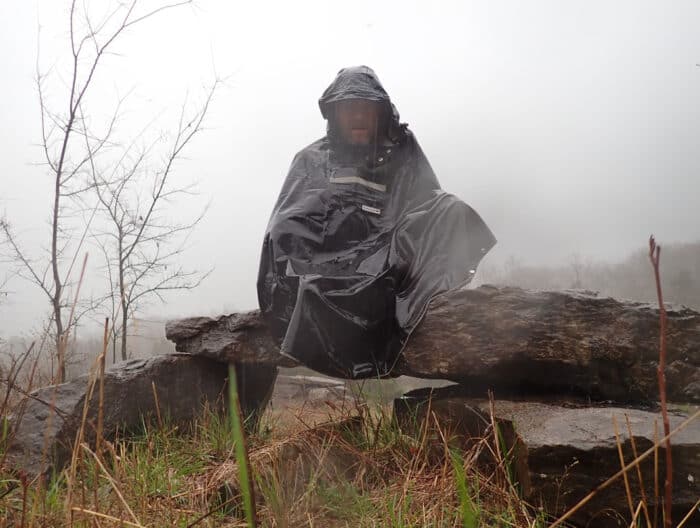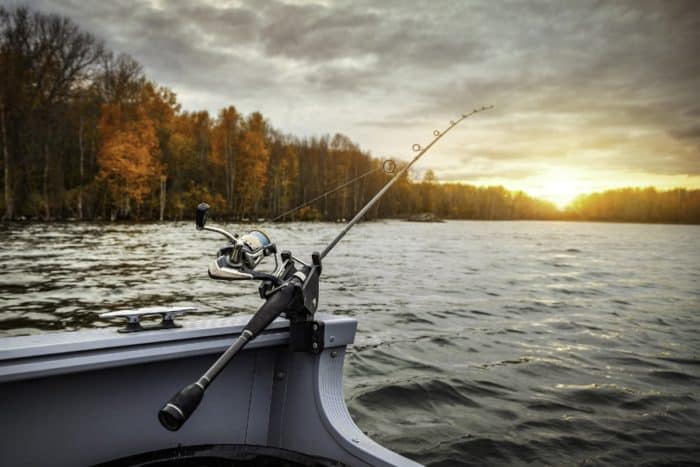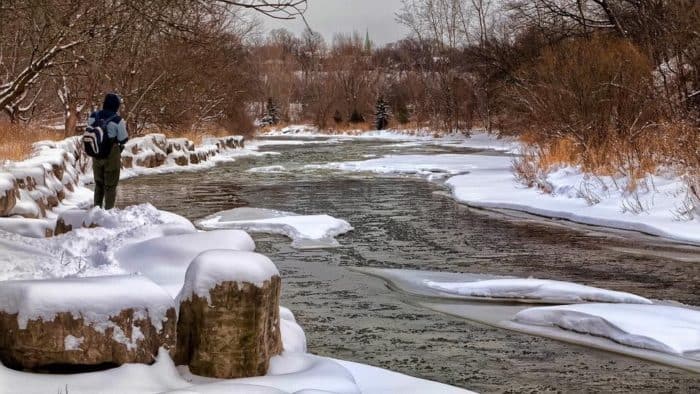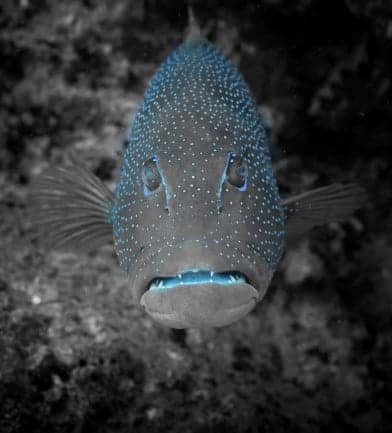How to Hold A Trout
Whether you’re catching trout for food or trophies or just for fun, it’s hard to resist the urge to pick one up. You haven’t really caught a trout until it’s in your hands. There’s something about holding it up and seeing what you’ve done that makes you feel good. Even if you’re going to let it go afterwards, you want that moment. It’s like a triumph or a success. you want to make sure you’re doing it correctly though. For your own safety, and for the safety of the trout.
Trout may not be as dangerous as some fish. It’s not like a barracuda or a piranha by any means. You don’t even have the stinging barbs that you might find on a catfish. But trout can be slippery and tricky. They have that protective slime layer. It’s not your safety you need to be worried about when handling trout. It’s the safety and well-being of the fish. No good angler wants to cause undue harm to a fish. Even if you’re keeping it to eat it later, there’s no need to make a fish suffer. That means understanding how to safely hold a trout is important.
In the past, the well-being of the fish has been something a number of anglers had ignored. But if you respect this hobby you need to be concerned. Whether this is a sport to you or a way to feed your family, you need those fish to be safe and healthy. If people don’t respect trout in their habitat that ruins your future chances of catching more trout. It’s common sense to take care of the fish if you want them to take care of you. Learning how to hold trout is part of this. Holding fish is a fishing fundamental.
Hand Positioning
Too often we forget that trout are living things. Imagine how you would feel if a giant hand reached into your home to hold you up for the camera. Even if you’re planning on releasing your trout, have some consideration for the way it feels.
Some anglers in the past would try to hold a trout by the gills. Or even hook it with their fingers through the mouth. This is uncomfortable and potentially harmful to the fish. Keep your hands away from the eyes and the gills of the fish. You need to handle trout more gently than that.
The best hand positioning for holding a trout is underneath. Cradle the fish to give it support at the front and rear if it’s big enough. Smaller trout can be held in one hand.
You want to cradle the trout in your hand with fingers parallel to the sides of it. You never want to squeeze, especially around the pectoral fins. Right behind the pectoral fin of a fish is the heart. Most anglers will pick up the trout and hold it in this area. You’ve likely seen photos of people holding a fish with their fingers squeezing it. In some cases you can see the indentation into the fish flesh. This is putting stress on the animal’s heart. You’re also potentially crushing the liver and damaging the gills in the same area.
Even if the fish is alive in your hands when you hold it this way, it may not survive. This grip puts pressure on the heart which can cause long-term damage. When you release the trout the stress of being caught plus the physical trauma could very well kill it later.
The best thing you can do is try to cradle the trout from underneath. Let it settle into your grip. This may take some more time than grabbing the fish, but it’s definitely worth it. It’ll be less traumatic for the fish, and you’ll be surprised at how a fish will actually work with you once it calms down. The trout needs to understand that it’s not in immediate danger.
It’s a hard sell to convince a fish you’re not out to hurt it. They want to be swimming free and you just hooked in the mouth and reeled it in. But if you’re patient, the fish will realize soon enough that the situation is not a danger. They will ease up and lower their stress levels. When that happens you should be able to slip a hand underneath it to support it. At that moment, it can be easy to manoeuvre the fish for a picture without any harm. It sounds a little like you’re trying to become the Fish Whisperer here, but it works.
Keep in mind that this is a general guide. Every trout is going to be different. Brown trout and brook trout are often more welcoming of a human grip. Rainbow trout tend to be very feisty. A big rainbow might fight you the entire time. A rainbow is a good trout to practice your patience with. If you keep at it, they do calm down eventually. At least most of them do.
Some fish are just not going to relax. Think of them like people in that way. No matter how much you try to calm them down, it doesn’t always work. In cases like that, it may be best just to cut your losses and let it go.
Pressure
Our instinct when holding a trout is to squeeze. Fish are slippery by nature. It’s hard to maintain a grip on one, and our instinct is to add pressure. To a trout, pressure is an attack. Think of how any prey animal would go for a trout. Whether it’s a bigger fish, or a mammal at the shore, they’re going to quickly and forcefully snap down on the trout.
Try to hold trout gently but firmly from below. Use as little pressure as is necessary to keep it secure. Not only will it keep the fish more calm, it is less damaging. As we said, the wrong grip risks crushing both the liver and the heart. If it’s not crushed outright, it could be very traumatized.
Your hand has more than enough pressure to kill a trout easily. You won’t even realize it’s happening because of how the internal organs of a fish are organized. This is truly a case of not knowing our own strength. Because of that, you need to be very aware. If you can see your fingers denting the flash of the fish you are squeezing too hard.
Location
If you need to pull a trout out of the water for a picture be aware of where you’re holding it. You don’t need to take the fish up out of the water and onto shore. The best position is held low over the water. Keep it near where it came from and where you are planning to return it to. This will keep the trout feeling more comfortable and less stressed. It also makes it much easier to return it to the water without injury. You can get just as good a photo if you’re holding it a foot or two above the water as you could if you’re standing straight.
The further you get from the water, the greater the chance that something could go wrong. You would not be the first angler who ever accidentally dropped a trout on the rocks. Even a secure but safe grip is liable to slip. These animals are slick on purpose. They don’t want to be caught and held by humans or predators for any reason.
The longer you hold a trout out of the water, the worse it is for the fish. We all understand that in general terms. It helps to think of it in realistic, relatable terms. How long could you handle having your head under the water? That’s essentially what you’re asking the fish to do when you take it out of the water. The longer you are unable to breathe, the worse you’re going to feel overall.
Often times you’ll notice if it’s been too rough on the trout when you release it. If you’ve ever released a fish that seems slow and lethargic when it was free, that means something was wrong.
A Calming Grip
Once you have landed your trout, you can ease its stress by covering its eyes with your hand. Place a hand in front of its nose to stop it from swimming and fold your palm to cover over its eyes. Like birds or horses, when a fish has been blinded, it will calm down and relax. When they can’t see, they are less likely to thrash about and hurt themselves. When a trout’s eyes are covered its natural reaction is to relax.
When you have the fish come down in this manner, you can use your free hand to grip it just above the tail. You don’t want to go too far up and risk more damage, or too far back and risk tearing the tail. You can test it by lifting the tail out of the water while keeping the eyes covered. You should be able to keep the trout from slipping if you have a good grip here. You don’t need a lot of pressure, just a firm grip. If it doesn’t slip from your hand, you’ve got it in the right spot.
Once you have the tail secured you can let the hand covering the fish’s eyes slide under the pectoral fins. Line up your index finger under its head and you should have a good, balanced grip at this point. Of course it’s very likely to struggle, but you should still be secure. This should minimize damage to the trout, and minimize the likelihood that it can escape.
You should be able to take a photo at this point, and then let the trout go simply and stress-free.
Use a Net
Some anglers swear by using bets. A big aluminum hoop that slips under just about any fish and creates a live well in the water. Many of us don’t bring them, though. Some people consider them the territory of children or amateurs. But why is that? They work great for keeping your fish held securely and safely. They can also give you the extra time you need to get your camera ready for a picture. It keeps the fish in the water but in a safe way. There’s really no good reason to not use a net.
Best Practices
It is recommended that you not pick up the trout at all. That said, everyone understands the thrill of catching a trophy trout. Sometimes a trout is too beautiful to release without saving some proof of what you caught.
Taking a photograph of a fish in water is not easy. The water both obscures the fish and will reflect the light. If you do plan on pulling it out, be prepared before you do so. Have your camera at the ready. Make sure you are in a place where you can release it again. Try to be quick and easy with it. If it takes a little bit longer, stay close to the water and make sure you can dip the fish back in.
You can’t be too hard on yourself if you’ve accidentally damaged a fish in your life. Oftentimes the only way we learn something is by making mistakes. That’s an unfortunate road to travel, but if you learn from it then that’s the most important thing. It’s hard for us to understand what a fish might be feeling. The difference between how we react to the world and how a trout reacts is night and day. But if you are able to observe what happens, you can grow and learn.
Everyone has to start somewhere when it comes to handling fish. No one is an expert right off the bat. You’re going to make mistakes, and you may regret some of those mistakes if they end up harming the fish. The best thing you can do is to understand what you should be doing, and how to do it.
At the end of the day, fishing is meant to be fun and relaxing. It can be a challenge, it couldn’t be a bonding experience. It can be the way you provide a meal for the family. A good angler respects the fish and the water that they’re fishing in no matter what.
Respecting fish today means that you’ll still be able to fish tomorrow. Conservation is something we all need to take seriously. We’ve all read stories about how at risk some fish species are. Studies have shown that the world population of fish has decreased over 4% in the last 100 years. That may not be a huge number, but that represents millions of fish. This is why using barbless hooks has become such a big deal in fishing. It lets them go back in the water safely.
The overall population of steelhead trout has been on the decline in recent years. Other populations around the world are facing the same problems. These population problems are not linked to poor fish handling. Things like climate change and overfishing and pollution are to blame. That means as anglers we’re battling uphill against huge world issues. You can’t fight climate change on your own. You can’t fight pollution on your own. But you can be responsible for your part of this whole ecosystem.
Everyone has to do their part. That means learning how to handle trout. Releasing them safely so that the population can continue to thrive. It’s good for the anglers of today, and it will be good for future generations of anglers as well. This is something that we all need to be responsible for.
Categories: Fishing
